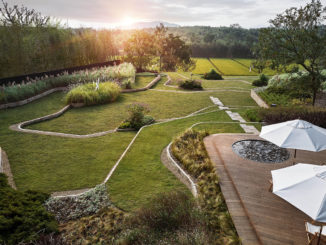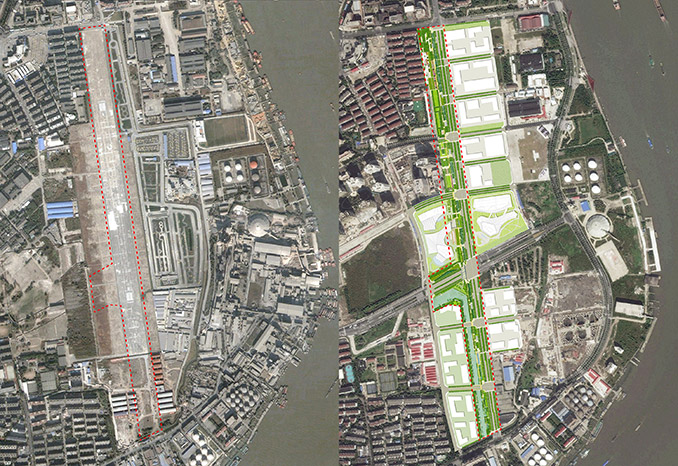
Construction started on Xuhui Runway Park in early 2016, an innovative urban renewal project in Shanghai designed by Sasaki Associates. The site records traces the history of the urban development of Shanghai. As such, it was imperative to create a design that transcends time and space, bringing a piece of the site’s past into the modern fabric of the city. Formerly a runway for Longhau Airport, the park’s design scheme mimics the motion of a runway, creating diverse linear spaces for vehicles, bicycles and pedestrians. Many of the park’s spaces resemble the ascending and descending experience of being on an airplane, which connects visitors to the site’s history while also providing varied viewpoints of the site. While all the spaces are linear in shape, diverse spatial experiences are created by applying different materials, scales, topography, and programs. In this way, the park serves as a runway of modern life, providing a space for recreation and respite from the surrounding city.
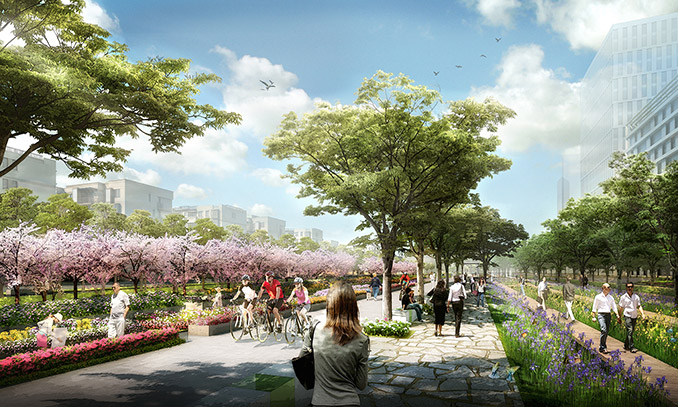
Designing the street layout for the area focused on creating a compact urban district through limiting the width of vehicular travel lanes and promoting public transit over the use of passenger cars. Additionally, adding a bicycle lane through the park encourages bicycle use, creating a human-scaled boulevard. Sunken gardens are sited between the park’s subway station and neighboring development parcels, improving the walking experience to and from the subway while enriching the spatial composition of the park. The design preserves portions of the runway’s original concrete where feasible, including the reuse of broken concrete pieces to build plaza, paths, and sidewalks.
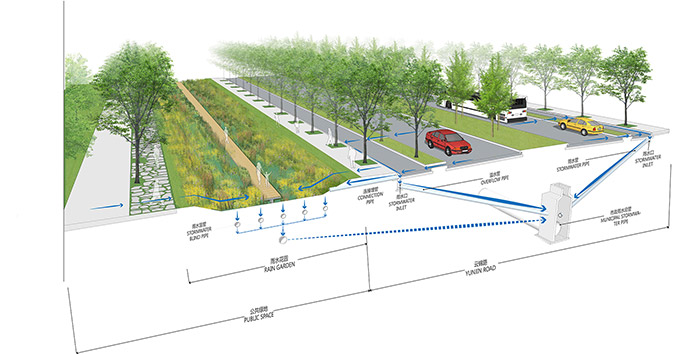
The stormwater from Yunjin Road and the park is managed through the 3,580 square meter rain garden and 9,300 square meter constructed wetland along the road. It will be the first roadside rain garden to be built in the city of Shanghai. While runoff from the northern half of the site passes through the integrated rain gardens before discharging into the drainage canal, the southern half of the site will drain through a series of filtering wetland ledges and terraces. The combination of open forebay channels (to slow velocities) and planted wetland ledges help reduce suspended sediments and pollutants from the street runoff. All site runoff eventually reaches the drainage canal, which ultimately drains to the Huang Pu River.
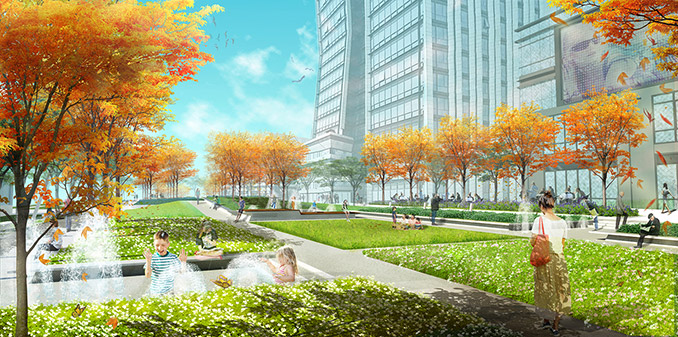
Diverse wildlife habitats are integrated with various landscape programs, with 100% plant species native to Yangtze Delta. Habitats include:
- Bird Watching Garden: planted with tree and shrub species which provide ideal food sources and dense cover for urban birds
- Fruit Tree Grove & Tree Groves: fruit trees attract beneficial pollinators during flowering season while providing food, shelter, and cover for urban birds throughout the year
- Rain Garden, Four Season Garden, and Butterfly Garden: diverse plantings of native grasses and wildflowers can provide an ideal food source and habitat for birds, small mammals, and invertebrates Blooming flowers, dense vegetation cover, and abundant seeds offer a wide array of food and cover for many species
- Wetland Ledge: shallow submerged areas provide ideal conditions for emergent wetland plants which help to naturally filter water. Dense aquatic plantings offer ideal habitat for aquatic invertebrates, small fish, and amphibians
- Bioengineered Riparian Edge: living plant material is used as the primary component to reinforce and stabilize canal edge which improves water quality, offering a low-cost solution over traditional hard engineering Use of native vegetation improves terrestrial and aquatic habitat and provides a more favorable aesthetic
- Floating Wetland Module: where space is limited floating fiber mats provide space for wetland plants which thrive on nutrients in the water. Dense vegetation above and below the water provides ideal habitat for birds, invertebrates, amphibians and fish
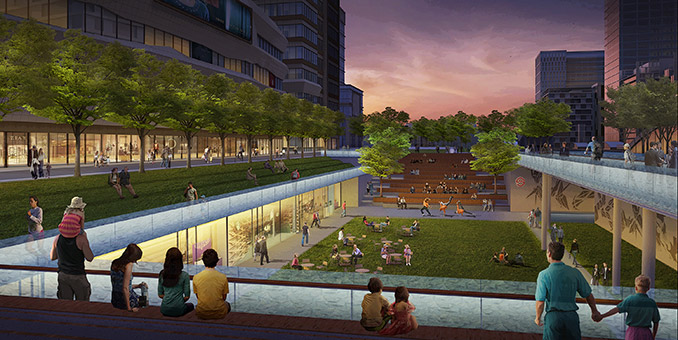
Site structures include shade structures and bus shelters. These structures are provided as public amenities for park and public transportation users. To clearly identify them with the Runway Park, the structures share materials and geometric qualities. Grouped together, they are intended to reinforce the design intentions of the landscape. The form and materiality of the shade structures draw inspiration from the history of the site. Minimal, large scale geometries echo the foundations of aviation design. The use of precast concrete units with carefully chosen aggregate relates to the historical runway surface of the airport.
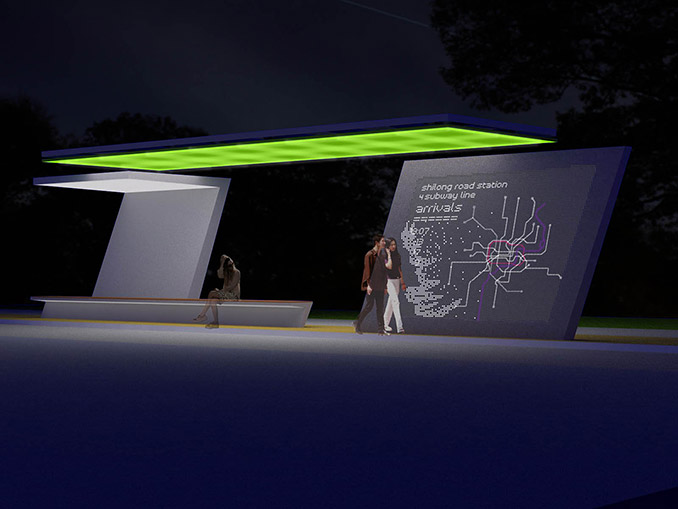
The graphic design scheme starts with a horizontal strategy, gradually building speed before transitioning into a vertical strategy, culminating at three shade canopy destinations. The wayfinding takes its cue from the historic runway markings and lights of Longhua Airport, establishing a connection between the historic use of the runway and the park’s conceptual scheme. Large graphics are featured on the ground plane at major intersections, referred to as “take off” or “departure points” of the park’s urban journey concept. These supergraphics offer a unique experience no matter your speed of travel, whether viewed while walking, running to catch a train, biking or glancing down from a neighboring skyscraper. Supergraphics address the diverse programmatic and structural adjacencies of the park.
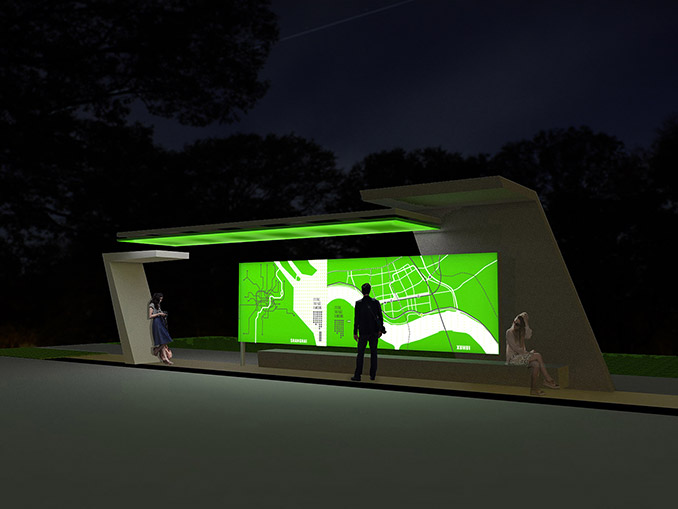
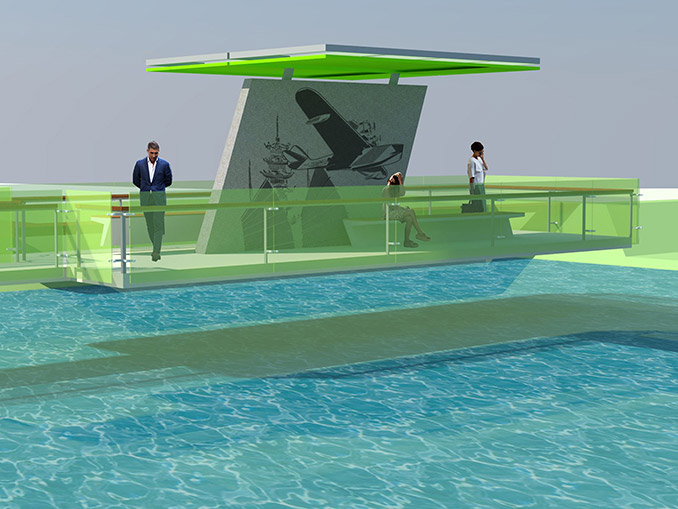
The historic aerodynamic and industrial sensibility of the site is referenced through the use of lighting towers that recall the transmission of communication and airfield illumination of the airport. High-mast lighting is not only a nostalgic detail; by reducing the quantity of luminaires required, it increases the overall sustainability of the project. In-ground lines and dots of light outline the former runway and will serve as a signature visual element for the park. Lit handrails, benches, and elevated pathways will, along with the environmental graphics package, provide a visual boundary for the current planned usage. The designs of three themed fountains also reflect the history of the runway.
Xuhui Runway Park
Design Firm | Sasaki Associates
Location | Shanghai, China
Size 8.24 hectares
Status | in progress
Image Credits | Sasaki Associates


